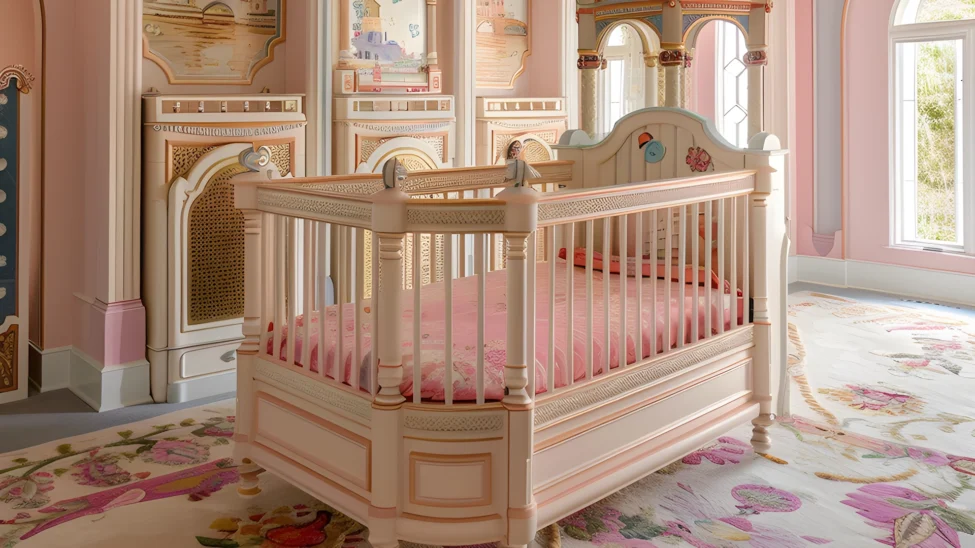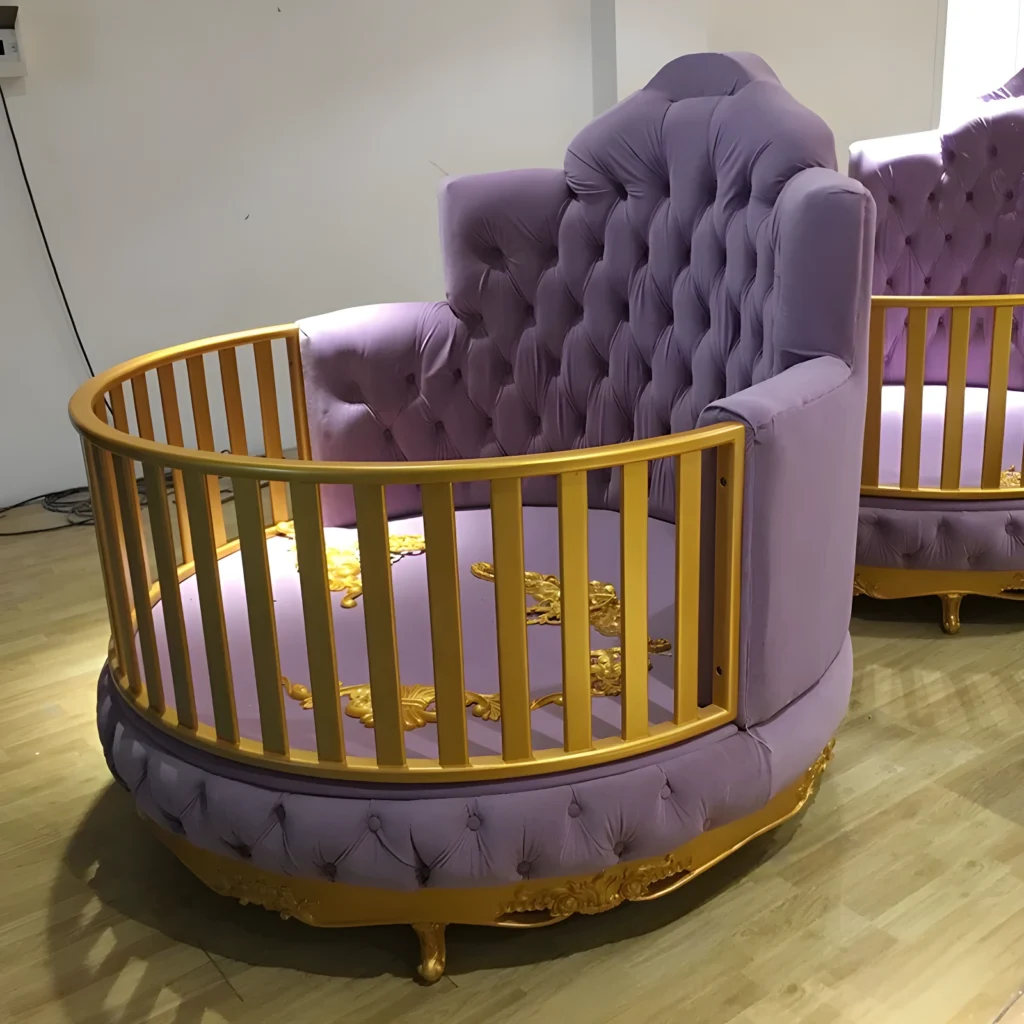
It’s Not Just About the Price Tag
I’ve worked with families who’ve decorated nurseries that could easily be featured in magazines — curved white oak cribs, velvet canopies, antique gold drawer knobs. And I’ve worked with families who made a mattress on the floor work just fine. What I’ve learned? Expensive doesn’t always mean better — but sometimes, it surprisingly is.
There’s this idea that luxury cribs are frivolous or just for show. And sometimes they are. But when design meets function — like thoughtful adjustability, organic materials, and safety that goes beyond the minimum — the price tag starts to feel more justifiable. It’s not just about style. It’s about experience, materials, and longevity.
If your baby is spending 12 to 16 hours a day in the crib, it makes sense to consider comfort and safety at a deeper level.
What Actually Makes a Crib Designer?
It’s easy to slap a label like “designer” on anything over $1000, but that’s not the full story. The real difference often lies in how a crib is made, what it’s made of, and how it grows with your child. High-end cribs are typically built from solid, sustainably sourced woods, with attention to non-toxic finishes, and sometimes even handcrafted details.
Some things I’ve noticed while helping parents test luxury cribs:
- The build quality is often remarkable — no creaking, no wobbles, smooth-adjusting mattress bases.
- Many have built-in conversion features that don’t require extra purchases later on.
- Designs are more timeless than trendy — some cribs turn into beautiful toddler beds or even full-size beds without looking awkward.
Still, not every “designer” crib lives up to the hype. Some are just overpriced because of the name. I once helped a client return a €2000 crib because it smelled heavily of varnish — proof that branding isn’t everything.
Style and Sleep: Can They Coexist?
This might sound strange coming from a sleep consultant, but yes, aesthetics can matter. A calm, cohesive nursery can create an environment that feels safer and more predictable for a baby — and that can help with sleep. But the key word here is “can.” It doesn’t automatically work like that.

When parents choose a crib purely for its looks, we sometimes end up adding a lot of “sleep fixes” after the fact — blackout curtains, sound machines, mattress upgrades. But when the crib itself supports sleep — with breathable slats, quiet mechanisms, and ergonomic design — fewer fixes are needed.
Function doesn’t have to be ugly. And beauty doesn’t have to compromise function. The best cribs manage both — and those are the ones I recommend.
Real Cases: What I’ve Seen in the Wild
I once worked with a couple in London who fell in love with a Scandinavian luxury crib — beautiful ash wood, rounded edges, three mattress levels, and zero tools needed for conversion. It wasn’t cheap, but they planned to use it for three kids. Two years later, they still rave about it — especially how sturdy and quiet it is during night wake-ups.
On the flip side, another client ordered a vintage-style iron crib from a high-end brand. It looked stunning, but it had sharp decorative elements on the side and couldn’t be adjusted easily. Their baby kept waking up from the noise it made when they leaned in. They eventually replaced it with a simpler model from a mid-range brand — and sleep got better almost instantly.
So yes, luxury can work. But not always. The details — materials, safety, design — matter more than the label.
When the Splurge Makes Sense — And When It Doesn’t
My rule of thumb? If you’re buying a crib that will last through multiple kids or will grow with your child into a toddler or full-sized bed, it may be worth investing. Especially if it’s made from non-toxic, breathable, high-quality materials that support safe sleep.
Sleep isn’t about luxury. It’s about consistency, comfort, and safety. If a designer crib adds to those, it’s a bonus — not a requirement.
But if the crib is just one piece of a massive nursery setup and doesn’t offer anything special besides the brand name — skip it. Focus on the mattress quality, air flow, and overall sleep setup instead. That’s where most of the magic happens anyway.


